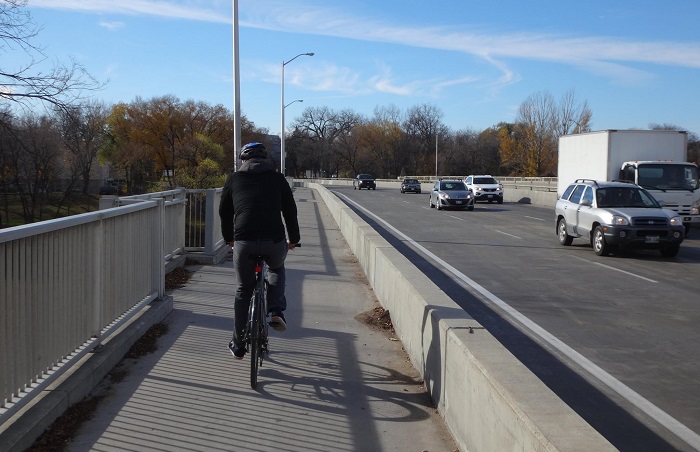If the city builds it, cyclists will use it: Winnipeg study
Riders in Winnipeg are greeting the new year with some solid numbers, proving how investment in cycling infrastructure, especially in past years, has boosted their numbers on the Manitoba city's asphalt.


Riders in Winnipeg are greeting the new year with some solid numbers, proving how investment in cycling infrastructure, especially in past years, has boosted their numbers on the Manitoba city’s asphalt.
The message is clear, advocates say: if the city builds it, cyclists will come.
The data was published in the 2015 Winnipeg Bicycle Counts report, a study of the city’s cycling traffic conducted by a team of volunteers from Bike Winnipeg. Looking at information going back to 2007, what it found, the CBC noted, is that there’s a direct correlation between the development of new cycling infrastructure—even on a limited scale—and a rise in the number of people who use it. Where locations across the city have been improved, the report shows an especially pronounced uptick—to the tune of 115 percent.
In other words, that new infrastructure—and the money spent in building it—most certainly isn’t going to waste.
Bike Winnipeg's 2015 Bicycle Count Report is now available on our website.
There is strong evidence that even… https://t.co/8ecPD4nJnR
— Bike Winnipeg (@BikeWinnipeg) January 7, 2016
“There is strong evidence,” the report said, “that even the limited construction of new cycling infrastructure that has occurred since 2009 has had a positive impact on the number of cyclists in Winnipeg.” Locations and their surroundings had a particular effect on whether or not the numbers of cyclists increased, and the data collected showed a substantial spike between the years 2009 and 2011—years, volunteers said, that saw more infrastructure development than others.
With that in mind, though, representatives from Bike Winnipeg say that growth and development of the city’s bike network needs to continue. Otherwise, there’s the likelihood that cycling—something many cities are increasingly supporting, much to their own economic benefit—will stall.
“After the big infrastructure spending in about 2009 [to 2011],” said Jeremy Hull, chairperson for Bike Winnipeg’s education committee, “there was a substantial increase in cycling. And now that there hasn’t been as much spending on new infrastructure, it has sort of leveled off.”
Nonetheless, the overall numbers of commuting riders in Winnipeg have increased by about 20 percent, the report indicated.
